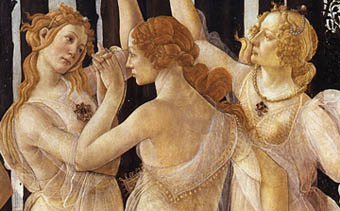Product Description
Louis F. Berneker “The Three Graces” Oil on Canvas c. 1910


LOUIS F. BERNEKER (1872-1937) USA
“The Three Graces” c. 1910
Oil on canvas, gilt Arts & Crafts style frame
Signed: Louis F. Berneker (lower left)
For more information see: Who Was Who in American Art
(Madison, Conn.: Sound View Press, 1985) p. 50
Canvas: H: 25 1/8” x W: 30 1/8”
Frame: H: 35 5/8” x W: 40 5/8”
Born in Cincinnati, Ohio, Louis Berneker first began his art training at the St. Louis School of Fine Art. From 1903 to 1904, he studied at the prestigious Académie Julian in Paris under J.P. Laurens. Upon his return to the United States, he lived primarily in New York City and later in Gloucester, Massachusetts, where he died in 1937. An accomplished painter in oils and watercolors, he was a member of the New York Watercolor Club, American Watercolor Society, the National Arts Club, and an associate member of the National Academy of Design. In 1930, the painter won prizes for works exhibited at both the National Academy of Design and Allied Artists of America’s juried shows. Berneker exhibited his work at the Pennsylvania Academy of the Fine Arts from 1910 to 1914 and again in 1921, as well as at the National Academy of Design in 1930 (prize), Art Institute of Chicago, and the Society of Independent Artists. His works are housed in the Church of St. Gregory the Great, New York City; the Belmont Theatre, both in New York City, the Chicago Theatre, and the Dallas Art Academy.
Louis F. Berneker “The Three Graces” Oil on Canvas c. 1910
You must be logged in to post a comment.

Reviews
There are no reviews yet, would you like to submit yours?